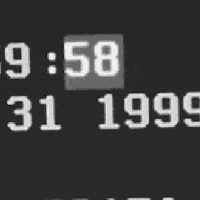
(Giorgio Trovato/Unsplash)
Things probably seemed a lot easier back in the day when our web browsers updated whenever Microsoft felt like it.
In a revelation that promises to introduce a whole lot of problems for web browsers and servers alike, both Firefox, Chrome, and the Chrome-based Edge are expected to hit version 100 in the coming weeks. The reason this is a problem is that, well, because we apparently hate planning, we never accounted for version 100 coming from our web browsers.
Perhaps a reason for that is that web browsers once used a much slower method of updating that only occurred when the browser company felt like it, instead of the more frequent and regular approach used these days.
So what’s the big deal you say? Well, turns out that the version number means something to web developers who operate web-based software. Per Google’s web.dev site:
Web developers use all kinds of techniques for parsing these strings, from custom code to using User-Agent parsing libraries, which can then be used to determine the corresponding processing logic. The User-Agent and any other version reporting mechanisms will soon report a three-digit version number.
So despite the fact that we learned that trying to designate things around the number of digits was a dangerous problem in the past, some web developers did it again in another place that had nothing to do with the year—and now, the web might just blow up for us in a month or so—which should be fun!
If you ask me, we learned a lot about collective misadventure from the Y2K bug, so why not relive it?

(Luis Morera/Unsplash)
The plus side is that the browser world has been through this before, when two-digit browser numbers became a thing.
“Many libraries improved the parsing logic when browsers moved to two-digit version numbers, so hitting the three-digit milestone is expected to cause fewer problems,” the Mozilla Hacks website explained.
But it has not exactly been perfect.
Some of the bugs that have appeared so far, according to a tracker on GitHub, appear to be things that you’d never think of being affected by the browser version. For example, there are a number of issues that emerge with the CSS on the Yahoo website in Firefox if you use version 100 of that browser. But some sites, like the EU version of Politico, would simply not load because of this before being fixed. These are big sites, sites with development teams likely well beyond what you’re used to working with. And even they’re running into the 2022 version of a bug we’ve known has been a bug for more than 22 years.
So if you want to spend your weekend trying to bug fix something, turn on the flag in your browser to test the version 100 user-agent string and see what explodes. If it doesn’t, I encourage you to gloat, because something on your website was better-coded than Yahoo.
All seriousness, though, this problem is extremely amusing to me.
Time limit given ⏲: 30 minutes
Time left on clock ⏲: 6 minutes, 32 seconds



